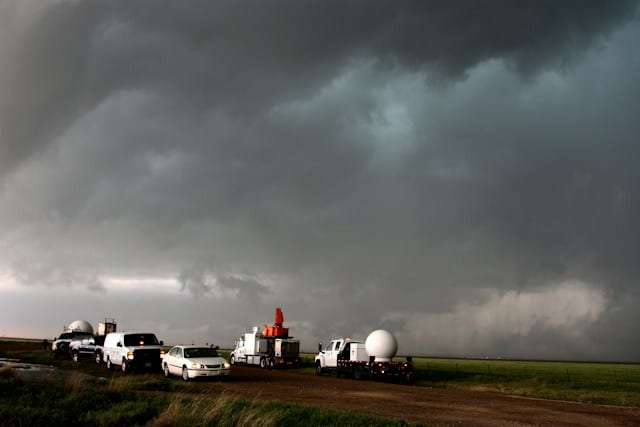In today’s world, where unexpected natural and human-made events pose constant threats, disaster management has become a central focus for many governments and organizations. Innovative technologies, especially Artificial Intelligence (AI), have begun playing a crucial role in bolstering disaster preparedness and response activities. AI’s capabilities to predict, analyze, and manage data can significantly help in pre-disaster planning and post-disaster recovery.
Predictive Intelligence: The Future of Disaster Preparedness
AI holds the potential to transform the way we prepare for disasters. Predictive intelligence, a product of AI, can be a game-changer in developing robust systems for disaster preparedness.
A lire aussi : Is 3D printing revolutionizing the aerospace industry?
Predictive intelligence harnesses the power of data analytics and machine learning to predict potential disasters accurately. AI algorithms scour through large amounts of data, learning from past events, and predicting future ones with remarkable accuracy. These predictions give governments and emergency management organizations ample time to prepare for a disaster, strategize, and deploy resources efficiently.
AI technology also facilitates the creation of simulation models that imitate potential disaster scenarios. These models enable responders to visualize the impacts of disasters and devise effective response strategies. It is a crucial step towards proactive disaster management, moving away from the traditional reactive methods.
A découvrir également : How to learn a foreign language with a chatbot ?
AI in Disaster Detection and Alerting
Early detection and immediate alerting are critical in disaster management. AI, with its advanced data processing capabilities, can aid in the quick detection of disasters and timely dissemination of alerts.
AI-based systems can monitor real-time data from various sources such as weather satellites, seismic monitors, and social media posts. These systems can identify patterns or anomalies indicating a possible disaster, much faster than traditional methods. The quicker a disaster is detected, the more time responders have to react, potentially saving lives and resources.
Also, AI can disseminate alerts rapidly to a large population. With its ability to analyze data from various sources, AI can identify the most threatened areas and prioritize alert dissemination. This not only saves time but also ensures that the people most in need receive help first.
AI’s Role in Disaster Response and Recovery
The importance of AI extends beyond disaster preparedness and alerting to the crucial phases of disaster response and recovery.
In the immediate aftermath of a disaster, AI can aid responders in assessing the extent of damage and identifying the most affected areas. Drones equipped with AI technology can scan disaster-hit areas, collecting real-time data and visuals. AI algorithms can then analyze this data rapidly, identifying severely damaged infrastructures and areas with trapped or injured individuals.
Moreover, AI can help in resource allocation during the recovery phase. By analyzing data from various sources, AI can predict the types of resources required in specific areas and the best routes to deliver them. This can significantly improve the efficiency and effectiveness of recovery efforts.
AI in Health Management during Disasters
In disaster situations, health management is a significant concern. AI can play a pivotal role in managing health emergencies during disasters.
AI can help predict the potential spread of diseases following a disaster. By analyzing various factors like population density, sanitation conditions, and available health facilities, AI can identify areas at high risk of disease outbreaks. This predictive analysis can help health organizations to proactively deploy resources and implement preventive measures.
Additionally, AI-powered telemedicine can provide remote health services during disasters. This can be particularly beneficial in cases where health facilities are inaccessible or overwhelmed due to the disaster.
AI for Government and Organizations in Disaster Management
Government and organizations play a crucial role in disaster management. With AI, they can improve their disaster preparedness and response strategies.
AI can help governments and organizations to create data-driven disaster management strategies. By analyzing historical and real-time data, AI can provide insights into potential disaster risks and effective response strategies.
Moreover, AI can aid in improving the coordination among various stakeholders involved in disaster management. AI-powered platforms can facilitate real-time communication and collaboration, ensuring a unified and efficient response.
In conclusion, AI is not just a technological innovation. It is a tool that can help us better prepare for disasters, respond effectively when they occur, and recover faster in their aftermath. With the continued development of AI, the future of disaster management looks promising.
Leveraging AI for Climate Change Mitigation and Disaster Preparedness
Artificial Intelligence is increasingly being used to combat climate change and enhance disaster preparedness. The ability of AI to process vast amounts of data and derive meaningful insights is being leveraged to predict and mitigate the impacts of climate change, a significant driver of increased natural disasters.
AI can analyze satellite images and other data to monitor climate change trends and predict possible outcomes. For instance, machine learning algorithms can process data from climate models to predict future weather patterns, enabling early warning for potential natural disasters. This predictive ability is crucial in disaster management, as it allows for proactive measures to be taken, enhancing preparedness response.
Apart from climate prediction, AI is being used to optimize resource use, reduce greenhouse gas emissions, and develop sustainable alternatives, all of which can contribute to mitigating climate change. For example, AI can optimize energy consumption in buildings and manufacturing processes, leading to reduced carbon emissions.
AI’s potential in climate change mitigation and disaster preparedness is immense. However, it requires the integration of technology with policy and decision making at different levels, from local administrations to international bodies. The continued development and application of AI in this field could significantly enhance our ability to combat climate change and improve disaster preparedness.
The Role of AI in Public Health Emergencies During Disasters
Public health emergencies often arise during and after natural disasters. The spread of diseases following a disaster can be as devastating, if not more, as the disaster itself. AI comes into play here by offering potential solutions to prevent and manage such health crises.
AI, with its predictive analytics features, can forecast potential outbreaks by analyzing factors like population density, access to clean water, and sanitation levels. This allows for the early deployment of medical resources and implementation of preventive measures, thus mitigating the impact of such outbreaks.
Moreover, AI can enhance decision making during public health emergencies. It can process real-time data from social media and other sources to monitor disease spread, assess public sentiment, and inform response strategies. AI tools can also predict the impact of various interventions, allowing decision-makers to choose the most effective measures.
Additionally, AI can improve resource allocation during health emergencies. AI algorithms can analyze the available resources, the needs of the affected population, and logistical factors to optimize the allocation and delivery of medical supplies and services.
Furthermore, AI-powered telemedicine can offer remote consultations and diagnoses when healthcare facilities are overwhelmed or inaccessible. This can significantly improve the accessibility and efficiency of healthcare services during disasters.
In summary, AI can greatly enhance the management of public health emergencies during disasters, from predicting potential outbreaks and informing response strategies to optimizing resource allocation and delivering remote healthcare services.
Conclusion
Artificial Intelligence is revolutionizing disaster management. It empowers us to predict natural disasters with a higher degree of accuracy, enabling early warning systems and proactive preparedness response. AI’s ability to analyze real-time data from diverse sources enhances disaster detection and alerting, potentially saving lives and resources.
Beyond disaster prediction and alerting, AI plays a crucial role in disaster response and recovery. It aids in damage assessment and resource allocation, enhancing the efficiency of recovery efforts. Moreover, AI’s role in managing health emergencies during disasters is invaluable, from predicting disease outbreaks to facilitating remote healthcare services.
AI also holds promise in mitigating climate change, a significant contributor to increased natural disasters. By leveraging AI for climate prediction, resource optimization, and the development of sustainable alternatives, we can better manage and mitigate the impacts of climate change.
AI’s potential in disaster management is immense, and with the continued advancement of AI technology, the future of disaster management in the United States and globally looks increasingly promising. However, it requires concerted efforts from governments, organizations, and communities to integrate AI into their disaster management strategies and decision-making processes.
In the end, AI is not just a technological innovation. It is a powerful tool that can help us better prepare for, respond to, and recover from disasters, ultimately making our societies more resilient in the face of increasing natural disaster threats.






